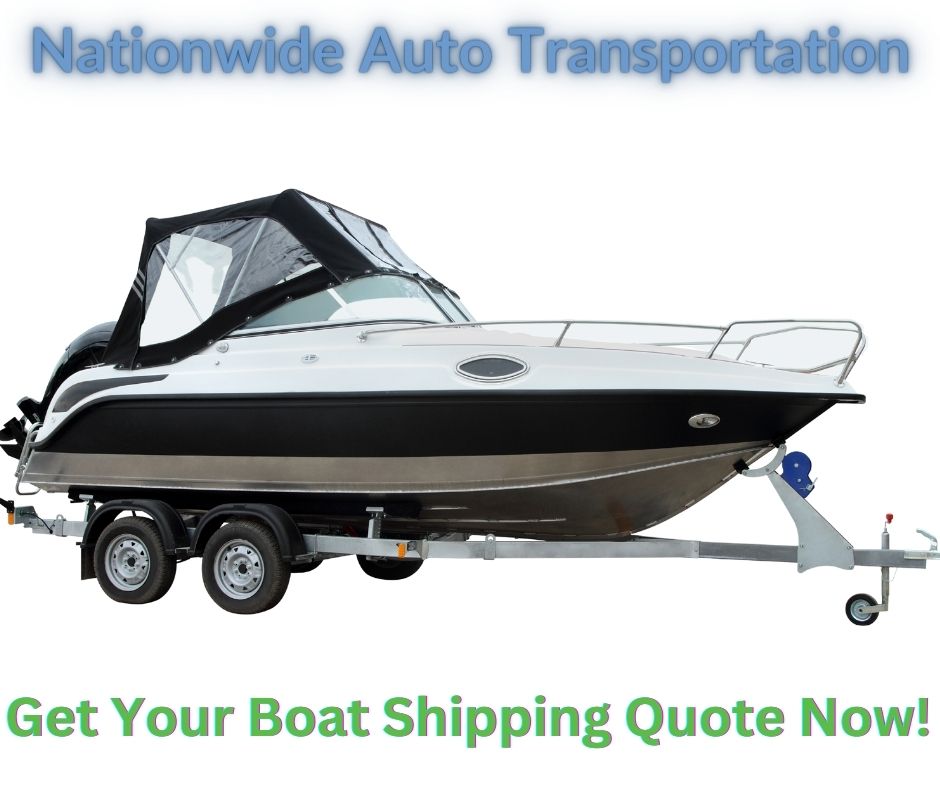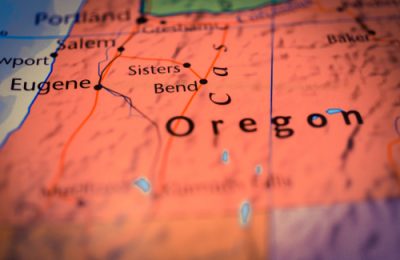
Reading Time: 30 minutes
Are you on the brink of choosing the right boat trailer but find yourself lost in a sea of options? You’re not alone. Many find themselves at a crossroads when it comes to selecting the best boat trailer and boat trailer capacity for their prized possession.
Still, pinpointing the perfect option is vital for the safe and efficient relocation of your boat. Here, take my hand! Let me guide you step by step through this pivotal decision-making process with our comprehensive boat trailer buying guide.
First things first, there isn’t a one-size-fits-all answer. In the dynamic world of boat trailers, tailoring your choice to your specific needs is key. Take into account factors such as the type and size of your boat, the boat trailer capacity, and the distance you plan to travel. This paves the way for a smart, informed decision.
Best Boat Trailer Buying Guide
In this choosing a boat trailer guide, we unravel the secrets to a smooth sailing boat transportation experience. Together, we will explore:
- The different boat trailer types available, including aluminum boat trailers and saltwater boat trailers.
- Cruising into the specifics of axle configurations and suspensions, so you’ll know exactly what to choose for your boat’s needs.
- Moreover, we offer you a roadmap on how to choose a boat trailer that aligns with the water type and conditions. A good read if you’re looking for aluminum vs galvanized boat trailers.
- Lastly, we’ll explore the boat trailer size calculator and how it can help determine the trailer GVWR for boats. This helps you pick the right trailer that won’t overload or damage your boat.
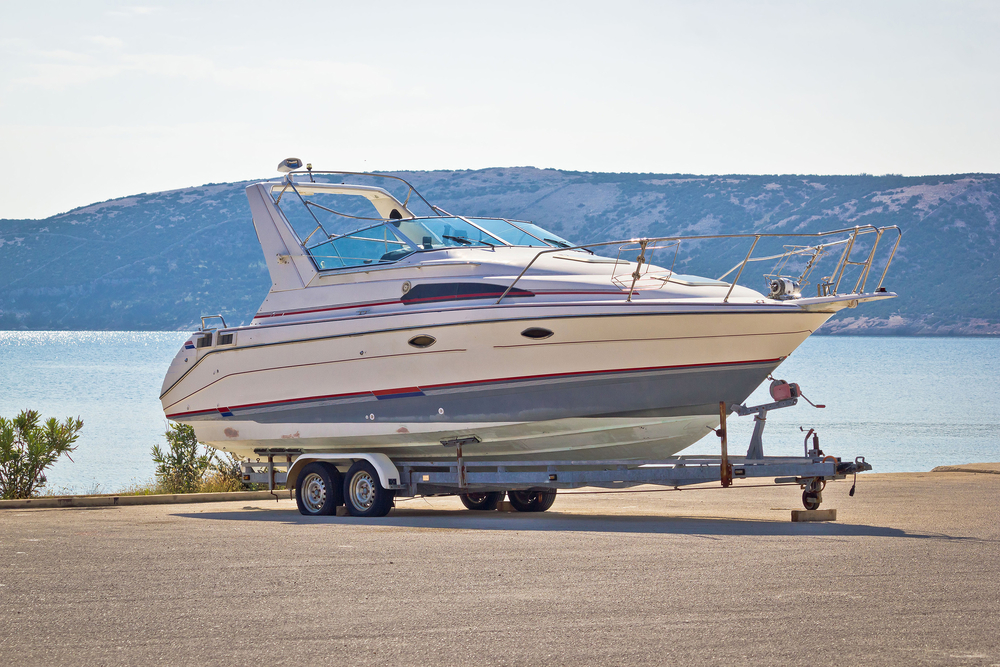
But here’s the golden tip: You can sidestep this entire meticulous process! Yes, there’s a way to avoid the potential pitfalls of choosing a boat trailer altogether. Booking your boat shipping with experts like Nationwide Auto Transportation means entrusting your boat to seasoned professionals. It’s a guaranteed way for your boat to reach its destination safely—without the headache of DIY boat shipping.
So, join me on this informational journey! Hop aboard, as we navigate through the vital elements that go into selecting the best boat trailer.
Types of Boat Trailers | Boat trailer Buying Guide
When it comes to choosing the right boat trailer, selecting the proper trailer type is essential for safe and efficient transport.
Did you know there are many boat trailer types available? Understanding the differences between them will help you pick the one that best meets your needs.
Here are some of the most common boat trailer types to consider:
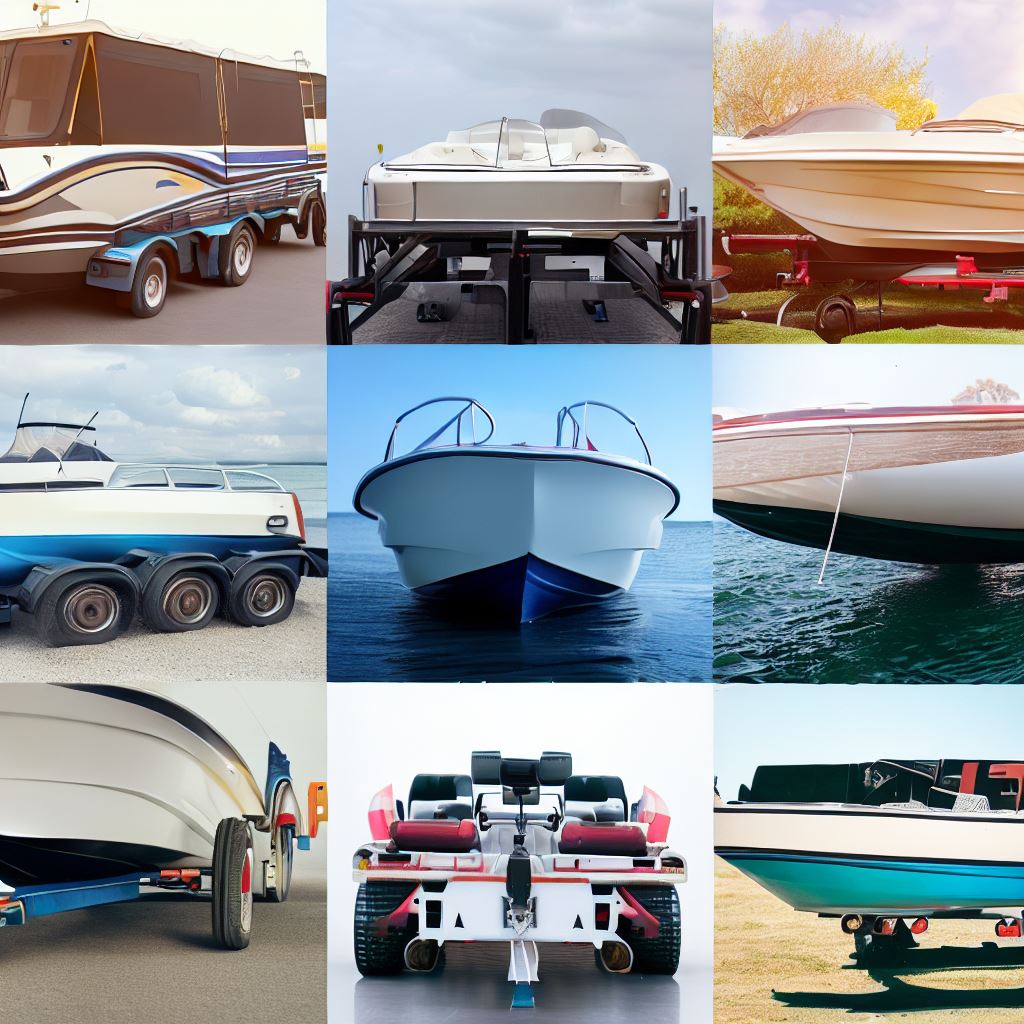
1. Bunk Trailers
Bunk trailers are among the most popular and versatile options. They feature long, padded bunk boards that support the boat from underneath, offering solid hull support. Bunk trailers are perfect for boats with flat bottoms, as they provide excellent stability and security during transport. This type of trailer is great for those looking for a reliable, all-around option for various boat types.
2. Roller Trailers
Roller trailers use a series of rollers that allow the boat to roll on and off easily. This makes roller trailers ideal for boats that are frequently launched and retrieved, especially in shallow or limited-water situations. The rollers allow for smoother loading and unloading, which can be a game-changer for boaters who need quick access to their boat.
3. Float-On Trailers
Float-on trailers, also known as drive-on trailers, make loading and unloading as easy as floating your boat onto the trailer. With a low-angle ramp, float-on trailers are designed to let the boat be driven directly onto the trailer, saving time and effort. These trailers are particularly convenient for larger boats. They allow for seamless launching and retrieval without requiring extensive backing into the water.
4. Keel Rollers | Boat Trailer Selection Tips
Keel roller trailers are designed specifically to support the centerline (or keel) of the boat’s hull. These trailers provide additional hull protection and added stability during transport. Keel rollers are perfect for boats with shallow drafts and V-shaped hulls. They offer extra support for the boat’s shape and structure. This trailer type ensures that the boat sits evenly and securely while being towed.
5. Rib Rollers
Rib roller trailers, sometimes called wobble rollers, are often used for smaller boats and personal watercraft. These rollers offer great support and are excellent for making the launching and retrieving process smoother. Rib roller trailers are especially suitable for boats with inflatable tubes or ribs. The rollers provide the necessary support without damaging the hull. They’re a great option for lightweight vessels and personal watercraft owners.
By understanding the different boat trailer types available, you can choose the one that best suits your boat’s specific needs. Whether you have a flat-bottomed boat, a larger vessel, or a personal watercraft, there’s a trailer designed to make transportation easier and safer.
Next, learn everything about boat trailer capacity and axle configuration. See why it’s a must-know for your towing safety before reading on!
Click on the link to learn everything about boat storage!
Axle Configuration Options for Choosing the Right Trailer
When choosing the right trailer for boat shipping, one important factor to consider is the axle configuration. The axle configuration determines the number and placement of the axles on the trailer. As a result, it directly affects towing capacity and stability.
Here are some common axle configuration options to consider when selecting your trailer:
Boat Trailer Selection Tips | Single Axle:
A single axle trailer has one axle positioned in the center. This configuration is most suitable for smaller boats and lighter loads.
Single axle trailers are known for their maneuverability, making them easier to park and navigate in tight spaces. However, they typically have a lower weight capacity compared to trailers with multiple axles. This makes them ideal for smaller boats but not recommended for heavy loads.
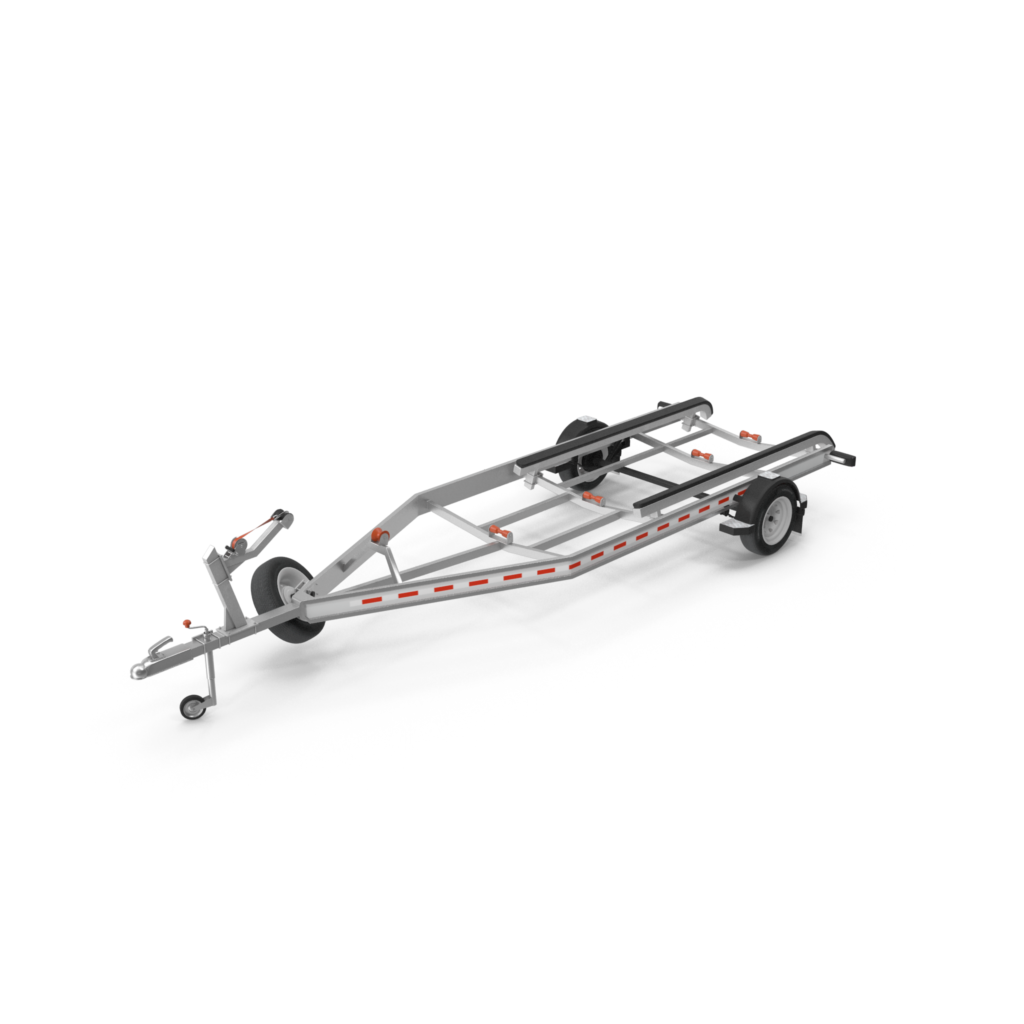
Closed Tandem Axle:
A closed tandem axle configuration consists of two axles placed close together. This design enhances weight distribution and stability, making it an excellent choice for medium-sized boats.
Closed tandem axle trailers also provide an increased load capacity, which results in improved towing stability. These trailers strike a balance between maneuverability and the ability to carry moderate loads.
Choosing the Right Boat Trailer | Tandem Spread Axle
In a tandem spread axle configuration, the axles are positioned farther apart to distribute the weight more evenly across the trailer. This improved weight distribution, offers better stability, and makes the trailer more suitable for larger boats. Tandem spread axle trailers are designed to handle heavier loads. They provide a smoother ride and greater towing safety, especially over longer distances.
Triple Axle:
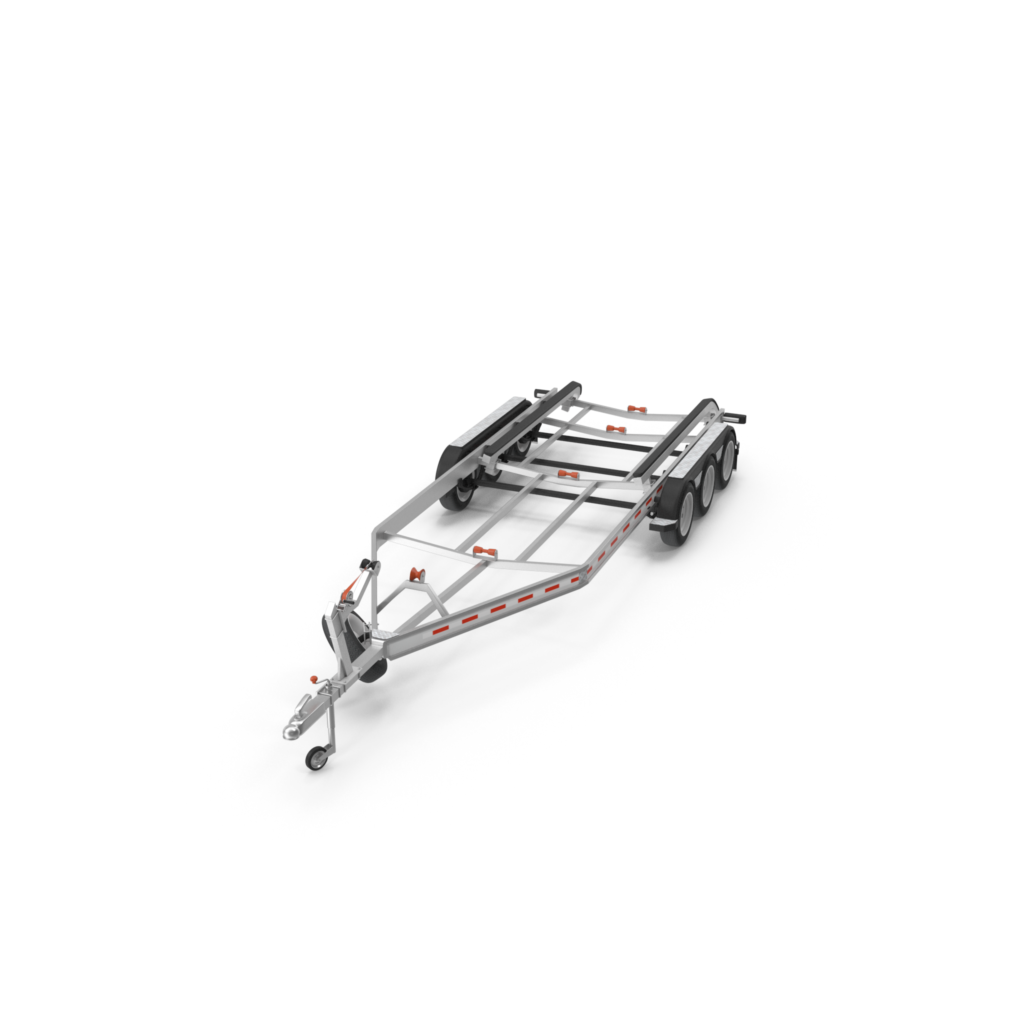
A triple axle trailer features three axles, allowing for even weight distribution and increased load capacity. Triple axle trailers are ideal for larger boats or heavier loads, offering excellent stability and superior towing performance.
These trailers are particularly useful when transporting large vessels or boats with significant weight.
Triple Spread Axle:
A triple spread axle trailer takes the triple axle configuration a step further by positioning the axles even farther apart. This maximizes weight distribution and provides exceptional stability and load capacity. Triple spread axle trailers are ideal for transporting extremely heavy boats or oversized vessels. They are commonly used in specialized boat transportation where stability and handling are paramount.
Choosing the Right Boat Trailer | Quadrupedal Axle
Also known as a quad axle or quad trailer, the quadrupedal axle configuration consists of four axles. These trailers are designed for transporting very large and heavy boats. Quadrupedal axle trailers offer superior load capacity and stability, making them ideal for specialized boat transportation. These trailers provide the necessary support for extremely large vessels or boats that exceed typical weight limits.
Choosing the right axle configuration for your boat largely depends on factors like size, weight, towing distance, and towing needs. Check that the axle configuration aligns with your boat’s specifications for safe and efficient transport. To guarantee that you’re selecting the right configuration, consult with a professional boat transport service. Get expert advice suited to your specific needs.
Now that you understand the importance of axle configurations, learn how to winterize your boat before the snow hits!
Boat Trailer Suspensions

When it comes to choosing the right boat trailer, the type of suspension makes a huge difference. The suspension system on a boat trailer plays a significant role for a smooth and safe towing experience. It helps to absorb shocks and vibrations, providing stability and protection for your valuable cargo. There are two main types of suspensions commonly used in boat trailers: torsion suspensions and spring suspensions.
Unlock the Top Benefits of Expedited Car Shipping Today! Not just for your car!
Choosing the Right Boat Trailer | Torsion Suspension
Torsion suspension systems are becoming increasingly popular in boat trailers due to their numerous advantages. Here are some key benefits:
- Design: Torsion suspensions use rubber cords or tubes inside the axle. These twist and flex to absorb bumps and vibrations. They don’t rely on traditional springs or shock absorbers, which makes them more efficient for smooth towing.
- Smooth Ride: Torsion suspensions offer a smoother ride compared to spring suspensions. The independent movement of each wheel helps to distribute the load evenly, Furthermore, they reduce the transfer of motion from one wheel to another. This results in a more comfortable ride for both the boat and the tow vehicle.
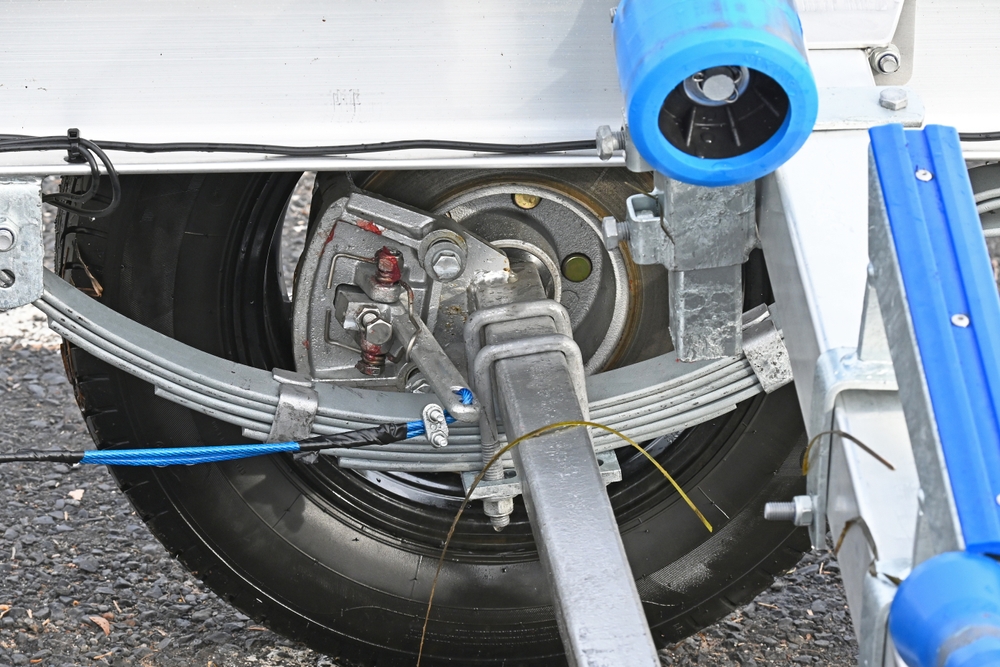
- Durability: The absence of traditional springs means that torsion suspensions are less likely to rust or corrode. They are also less prone to wear and tear, offering a longer lifespan compared to spring suspensions.
- Lower Maintenance: Require less maintenance since they don’t have as many moving parts as spring suspensions. This can save you time and money in the long run, making them a more reliable option for boat owners.
Spring Suspension
Spring suspensions have been the traditional choice for boat trailers for many years.
Here are some key points to know about spring suspension:
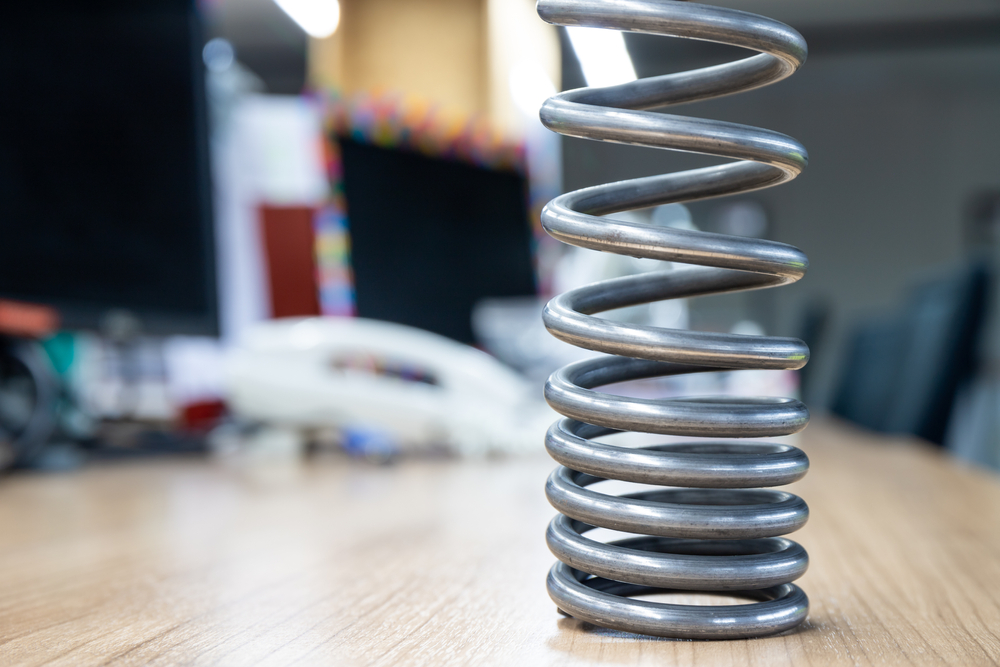
- Design: Spring suspensions use metal leaf springs that are mounted between the axle and the frame of the trailer. The springs compress and expand to absorb shocks and vibrations, making them ideal for absorbing heavy loads.
- Cost: Generally, spring suspensions are more affordable compared to torsion suspensions. If you’re on a tight budget, this may be a more cost-effective option while still providing the basic benefits of suspension.
- Versatility: They come in various configurations, allowing you to choose the right setup based on your specific needs. You can choose single leaf springs, multi-leaf springs, or even adjustable springs. Giving you flexibility in choosing the stiffness and performance of the suspension.
- Maintenance: Spring suspensions require regular maintenance for optimal performance. This includes greasing the springs and checking for any signs of wear or damage. Regular upkeep is necessary to prevent issues and extend the life of your trailer’s suspension system.
Boat Trailer Buying Guide for Suspensions
When you are looking for a suspension system for your boat trailer, consider the weight of the boat, the road conditions, and your personal preferences. Both torsion suspensions and spring suspensions have their advantages, so pick the one that best fits your needs and budget. Make sure the suspension type aligns with the weight distribution, terrain, and frequency of use.
“Choosing the right suspension for your boat trailer means a smooth and safe towing experience. Consider factors such as ride quality, durability, and maintenance requirements when making your decision.”
— Nationwide Auto Transportation
Methods of Boat Transport
When it comes to choosing the right boat trailer or other boat transport methods, there are several options available, each with its own advantages and considerations. Understanding these methods can help you choose the most suitable option for your boat transportation needs.
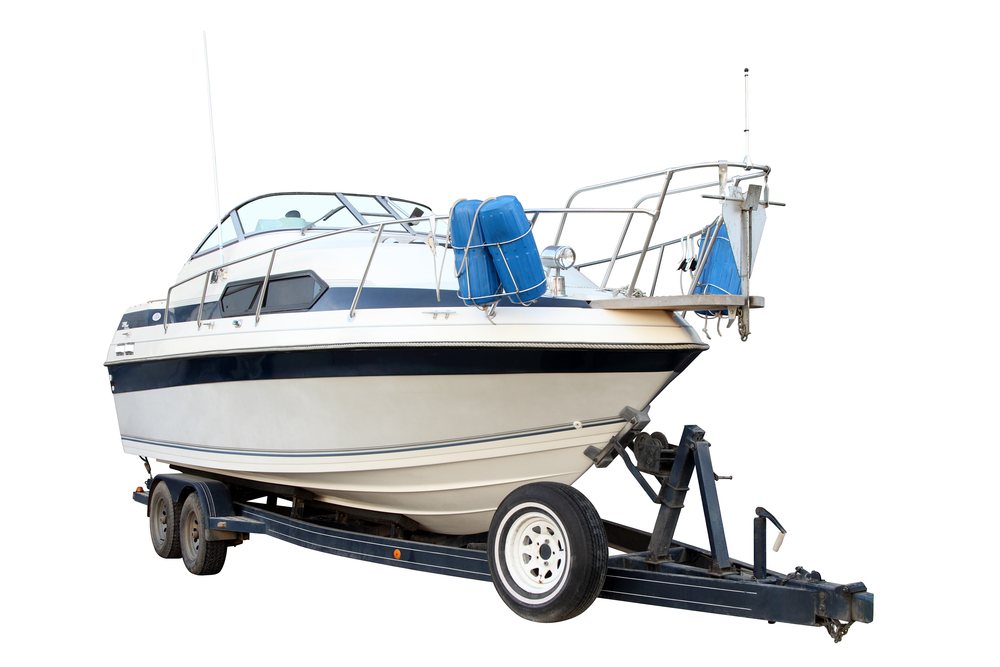
That said, here are some common methods of boat transport
Overland Transport: Involves transporting your boat over land using a specialized trailer. It is ideal for shorter distances or when the boat cannot be transported by water. Flatbed trailers, step-deck trailers, or lowbed trailers, depending on the size and shape of your boat, are commonly used for this method. If you need a reliable way to transport your boat across land, overland transport is an excellent option for both short and long distances.
Overland transport uses flatbed trailers, step-deck trailers, or lowbed trailers, depending on the size and shape of your boat.
Types of Transport
- Watercraft Transport: If your boat is located near a body of water, watercraft transport can be a convenient option. This method involves using a boat trailer to transport your boat to and from the water. It is commonly used for launching and retrieving boats at marinas or boat ramps. Watercraft transport is an ideal choice for shorter trips that don’t require crossing long distances.
- Air Freight: Is a fast and efficient method of boat transport. Especially for long distances or when time is a critical factor. Your boat will be securely packed and transported on a cargo plane to its destination. However, air freight can be quite expensive compared to other methods, so it’s best suited for high-value or urgent shipments.
- Container Shipping: For international boat transport, container shipping is a popular option. Your boat will be loaded into a shipping container, securely strapped, and transported by road, rail, and/or sea to its destination. Container shipping offers added protection from the elements and is a reliable method for long-distance transportation. More so for boats that need to be shipped overseas.
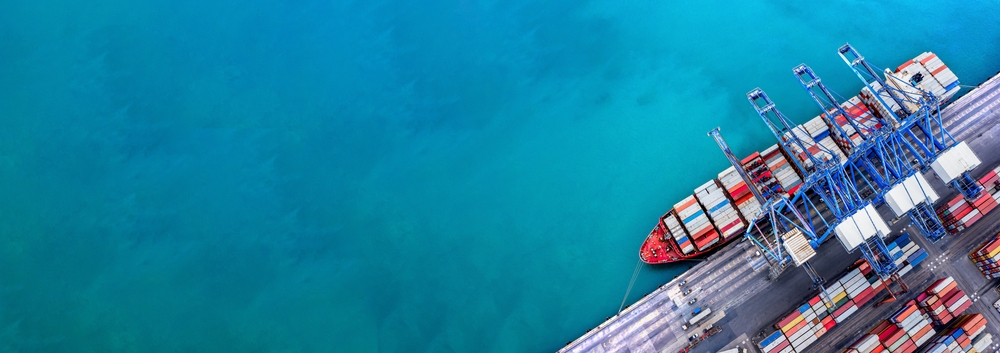
Boat transport methods vary in terms of convenience, cost, and security. When selecting the best option for your needs, be sure to consider factors such as the distance, size of the boat, and your budget. Whether you choose overland transport or container shipping, understanding your transport needs will help secure a smooth and safe journey for your boat.
Are you planning to buy a boat in the near future? Boat Shipping Terminology | Essential Guide for Buyers will help you make an informed choice. Know the lingo, and get sailing!
Selection Criteria for Boat Transport Service
When it comes to transporting your boat, choosing the right service provider is crucial. The safety of your valuable investment depends on it. Consider these key criteria when selecting a boat transport service:
Experience and Reputation
Look for a transport company with a significant track record and a strong reputation. A company with proven experience is more likely to handle your boat with care and ensure its safe delivery.
Specialization
Consider whether the transport service specializes in boat shipping. Specialized companies have the necessary expertise and equipment to handle boats of different sizes and types. They know how to properly secure your boat for transportation, reducing the risk of damage during transit.
Insurance Coverage
Make sure that the transport service has adequate insurance coverage to protect your boat against potential damage or loss. Request proof of insurance and verify that it covers the full value of your boat. Nationwide Auto Transportation offers comprehensive shipping insurance for added peace of mind.
Licenses and Certifications
Peace of mind comes with knowing your auto transport company abides by the highest industry standards. Before choosing a service, make sure they hold the necessary licenses and certifications to operate legally in your area. This showcases their commitment to safety and industry excellence. For a more info, check out the regulations at the Federal Motor Carrier Safety Administration (FMCSA) and the Department of Transportation (DOT). Compliance with these governing bodies guarantees a standard of trust and reliability in your chosen provider.

Customer Reviews
Read reviews and testimonials from previous customers to gauge the company’s reliability, professionalism, and customer service. Positive reviews can give you confidence in their ability to handle your boat shipment.
Tracking and Communication
Find out if the transport service offers tracking capabilities so you can monitor your boat’s progress during transit. Additionally, good communication is essential for a smooth shipping experience. The company should provide clear communication channels and be responsive to your queries and concerns.
Cost and Value
While cost is an important consideration, don’t base your decision solely on the lowest price. Quality and reliability should take precedence. Consider the overall value you’re getting for your money. Think of the quality of service, safety measures, and level of customer support.
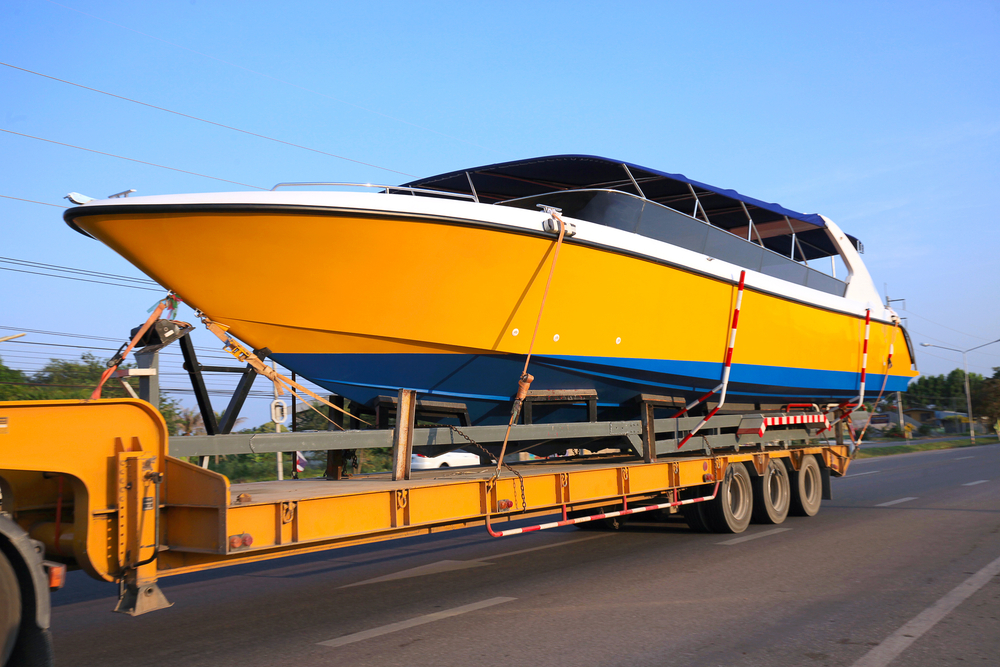
Remember, choosing the right boat transport service is pivotal for a safe and happy shipping experience. Take the time to thoroughly research and evaluate your options before making a decision.
Choosing the Right Boat Trailer | Open Transport Method
Shipping a boat via open transport is a cost-effective and straightforward option. It involves placing the vessel on an open trailer, exposed to the environment and visible to other drivers. Despite its lack of protection, it remains a favored choice for boat owners.
Benefits of Open Transport
There are several benefits to choosing the open transport method for your boat shipping needs:
- Cost-Effective: Often more affordable compared to other shipping methods. This is because the lack of enclosure and added security measures reduces the overall cost.
- Convenience: A straightforward and convenient method. It requires fewer specialized trailers and equipment. Hence, making it readily available and easily accessible.
- Faster Transit Times: Since open transport is a commonly used method in the transportation industry, there are typically more carriers available. This can result in faster transit times as carriers have more flexibility in scheduling.
- Versatility: Can accommodate a wide range of boat sizes and shapes. Do you have a smaller boat, a powerboat, or a sailboat? In either case, there is likely an open trailer option that can transport your vessel.
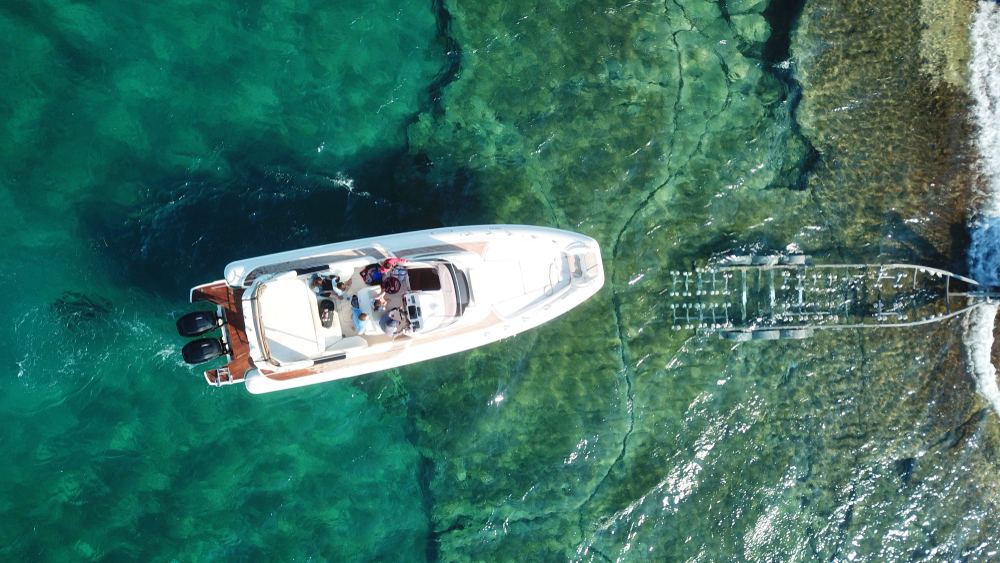
Want to know more about US Boat Regulations? This article has everything you want to know when shipping a boat in the United States. Visit Maritime and Waterways to learn more about use of waterborne transportation and its seamless integration with other segments of the transportation system
While open transport offers many advantages, there are also a few considerations to keep in mind before choosing this method.
Considerations for Open Transport
| Consideration | Pros | Cons | Tip |
|---|---|---|---|
| 🌦️ Exposure to Weather | None | Exposure to elements; weather conditions may affect the boat | Cover your boat with a tarp or use protective coatings. |
| 🔒 Security | Carriers usually take precautions to secure the boat | Visible to others; small risk of theft or damage | If concerned, consider other transport methods for extra security. |
| ⚖️ Size and Weight Restrictions | Can accommodate a wide range of boat sizes | Extremely large/heavy boats may require specialized trailers | Always check the carrier’s weight and size limitations to ensure compatibility with your boat. |
| 🗺️ Distance and Route | Suitable for various distances | Longer routes increase the risk of damage or wear and tear | Consider the route and distance thoroughly before choosing open transport. |
Is Open Transport Right for You?
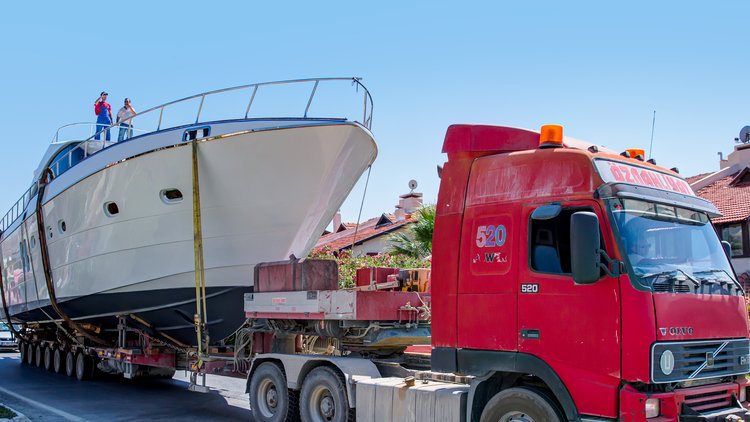
Open transport is a popular choice for boat owners looking for an affordable and convenient shipping method. However, it may not be suitable for everyone. Before making a decision, it is important to consider the specific needs and requirements of your boat.
If you are shipping a smaller boat, have a limited budget, and are not overly concerned about weather exposure or security risks, open transport can be a great option. It allows you to safely and efficiently transport your boat to its destination without breaking the bank.
What About Bigger Boats?
If you have a larger boat or valuable equipment on board, consider specialized boat shipping for more protection from weather and potential damage.
In conclusion, open transport is a cost-effective and reliable method for shipping boats. It offers convenience, faster transit times, and versatility. Cons are weather exposure, security risks, size and weight limits. Don’t forget that distance and route should be considered before selecting it. Take the time to evaluate your needs, and if open transport is the right choice.
Read this interesting article on Open vs Enclosed Auto Shipping | Best Option | Nationwide AT to help you decide what option is best for you and your vessel.
Custom Racking and Bunking in Specialized Boat Trailers
When transporting boats, especially larger ones, a specialized boat trailer is essential. These trailers securely hold and protect your boat during transit. Custom racking and bunking further enhance safety and efficiency. This customization tailors the trailer to your boat’s specific dimensions and shape, ensuring it stays put during the journey.
What is Custom Racking and Bunking?
Custom racking and bunking involves designing and building support structures on the boat trailer. These structures perfectly match the boat’s shape and contours.
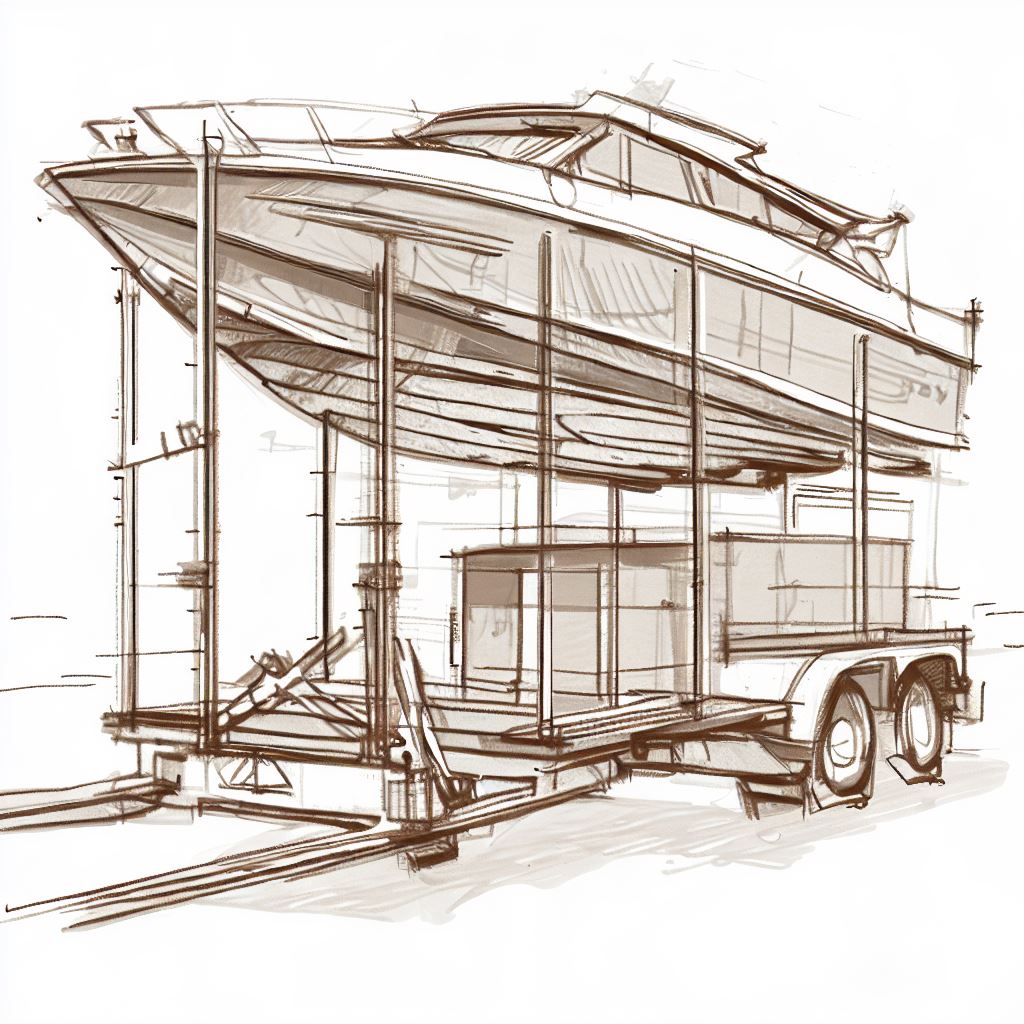
This often includes adjustable racking systems, bunk boards, or carpeted wooden supports. The goal? A snug, secure fit. This prevents the boat from shifting or getting damaged during transport.
Check out this YouTube video to learn how to convert a jet-ski trailer into a kayak trailer.
Do you need your boat somewhere in a hurry? Expedited shipping is the answer.
Benefits of Custom Racking and Bunking
A boat trailer with custom racking and bunking offers several advantages:
- Enhanced Safety: The custom fit keeps the boat stable and secure. This reduces the risk of accidents or damage during transport.
- Boat Protection: Bunk boards or supports distribute the boat’s weight evenly. This minimizes stress on specific areas and reduces the risk of hull damage.
- Improved Fuel Efficiency: A custom-fit trailer reduces wind resistance. This makes towing more fuel-efficient, saving you money.
- Easier Loading and Unloading: The custom design allows easy boat access, simplifying loading and unloading.
- Versatility: Custom racking and bunking can fit various boat types, even those with unique shapes.
Choosing Custom Racking and Bunking Options
When selecting a boat trailer with custom racking and bunking, consider your boat’s needs.
- Boat Dimensions: Be sure that the trailer can handle your boat’s length, width, and weight. The custom racking and bunking must match these dimensions.
- Boat Type: Different boats need specific support. For instance, sailboats with keel bulbs may require specialized racks.
- Protection: Consider extra protection. Padded bunk boards or carpeting minimize the risk of scratches or hull damage.
- Adjustability: Look for adjustable custom options. This lets you fine-tune the fit for your boat.
Working with Professionals
Professionals specializing in boat transport should handle custom racking and bunking. They have the expertise to create a custom solution that meets your needs. Working with them ensures safe and effective customization, giving you peace of mind.
Custom racking and bunking in specialized boat trailers is an essential aspect of boat transport. It provides a secure and tailored fit that protects the boat during transit. Simultaneously enhancing safety, and improving fuel efficiency.
When selecting the best boat trailer, consider your boat’s dimensions and type, plus any protective features you need. Work with professionals to customize it accurately and safely transport your boat.
Factors Influencing Boat Shipping Cost
When it comes to selecting the best boat trailer for your needs, several factors can influence the cost of transporting your boat from one location to another. Understanding these factors will help you make informed decisions, ensuring that you find the most cost-effective boat transport solution for your situation.
Here are the key factors that affect boat shipping cost:
Boat Size
The size of your boat largely determines your boat shipping costs. Larger boats require specialized equipment and often need permits for transport. This can increase the overall cost significantly.
- Tip: Boat weight and dimensions must be taken into account when determining the type of boat trailer and transportation method needed. Larger boats may require open transport or enclosed transport, which come with different price points depending on the level of service and protection.
Distance Traveled

The distance between the pickup and drop-off locations is another major factor affecting shipping costs. Longer distances typically result in higher shipping expenses due to factors like:
- Fuel Costs: Longer trips consume more fuel, increasing the cost of transport.
- Driver Wages: Drivers need to be compensated for the time spent traveling longer distances.
- Tolls: Additional toll fees may be incurred along longer routes.
In general, the farther your boat needs to travel, the more expensive the transport will be.
Trailer Type
The type of trailer used for transport can also impact the cost. Different types of trailers, such as flatbed trailers or step-deck trailers, have varying capabilities and cost structures.
Additionally, specialized trailers may be required for boats with unique characteristics. Think of oversize, or overweight boats.
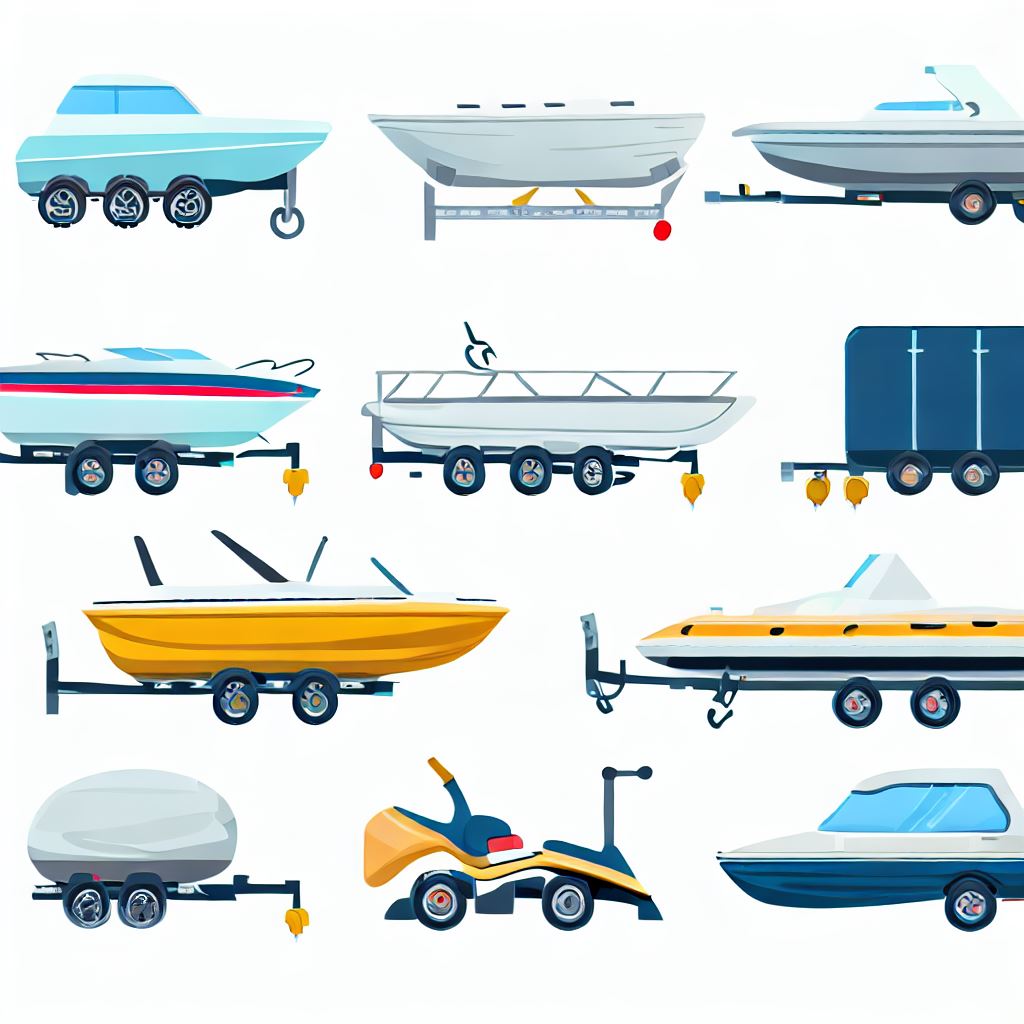
How to Choose a Boat Trailer | What Else to Know
Other Factors to Consider: In addition to size, weight, and distance, the method of transport and seasonality also play significant roles in determining the total cost of shipping. Whether you opt for open transport or enclosed transport, the time of year can affect availability and pricing due to demand fluctuations. Always keep these factors in mind when planning your boat shipment!
- Time of Year: Can influence shipping costs due to seasonal variations in demand. During peak boating season, when many boat owners are looking to transport their vessels, prices may be higher. Read Seasonal Trends in Auto Shipping | Do They Matter? for a detailed post on the topic.
- Access and Location: The accessibility of the pickup and drop-off locations can also impact the cost. If the locations are in remote or hard-to-reach areas, additional fees may be incurred.
- Insurance Coverage: The type and amount of insurance coverage you choose for your boat during transport will also impact the overall cost. It’s important to have adequate insurance to protect your investment. Boat Shipping Insurance Options | Your NAT Guide will lead you safely to the right waters.
This will help you to find the most cost-effective solution for shipping your boat. With that, it’s always a great idea to get quotes from multiple providers. Then, compare the services offered to find the best value for your money.
“Selecting the best boat trailer, and understanding the various factors that can affect the cost of boat shipping, are essential to a successful and budget-friendly boat transport experience. Take your time and do your research! Here’s to finding a reliable boat transport service that can meet your needs and priorities.“
Peter Dintler-Mann (Boat owner)
Selecting a Trailer According to Water Type
When it comes to choosing the right boat trailer, one important factor to consider is the type of water the boat will be used in. Different types of water, such as saltwater or freshwater, can have varying effects on the trailer and require different materials and designs to ensure durability and longevity.
Here are some considerations when selecting a trailer according to water type:
Galvanized Steel Boat Trailers for Saltwater
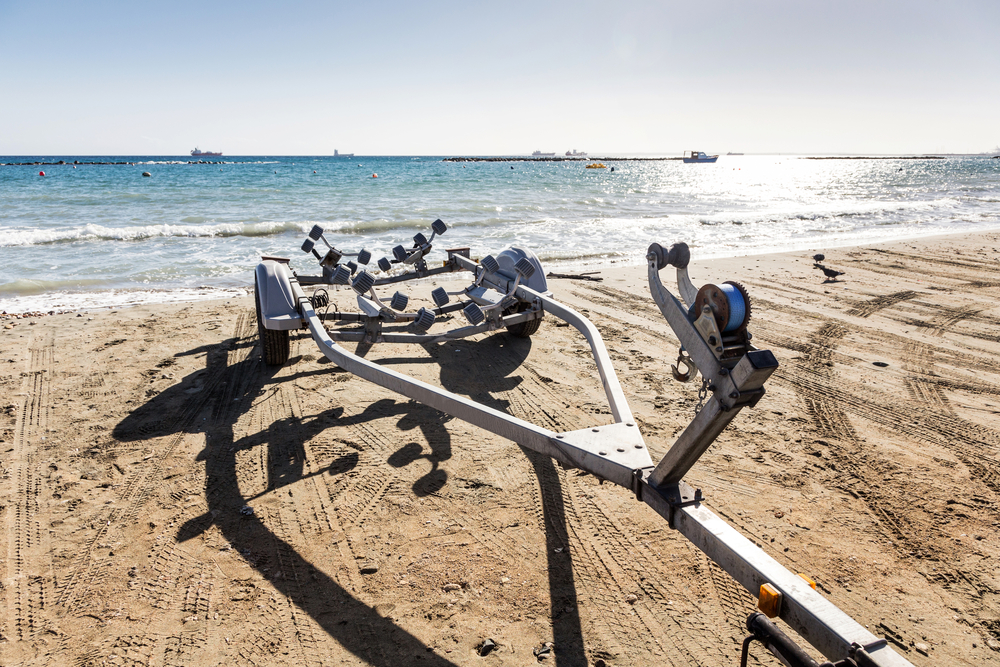
Saltwater is highly corrosive, meaning that trailers used in saltwater environments need to be built with materials that can withstand the effects of saltwater.
Galvanized steel boat trailers are a popular choice for saltwater use due to their resistance to rust and corrosion. The galvanization process involves coating the steel with a protective layer of zinc. It gives an extra layer of defense against the corrosive properties of saltwater.
- Why Galvanized Steel?: The protective zinc coating prevents rust and corrosion, significantly extending the lifespan of the trailer, even in harsh saltwater conditions. This keeps the structural integrity of the trailer over time. Not only that, but it provides a reliable transport solution for boat owners.
Painted Steel and Aluminum Trailers for Freshwater
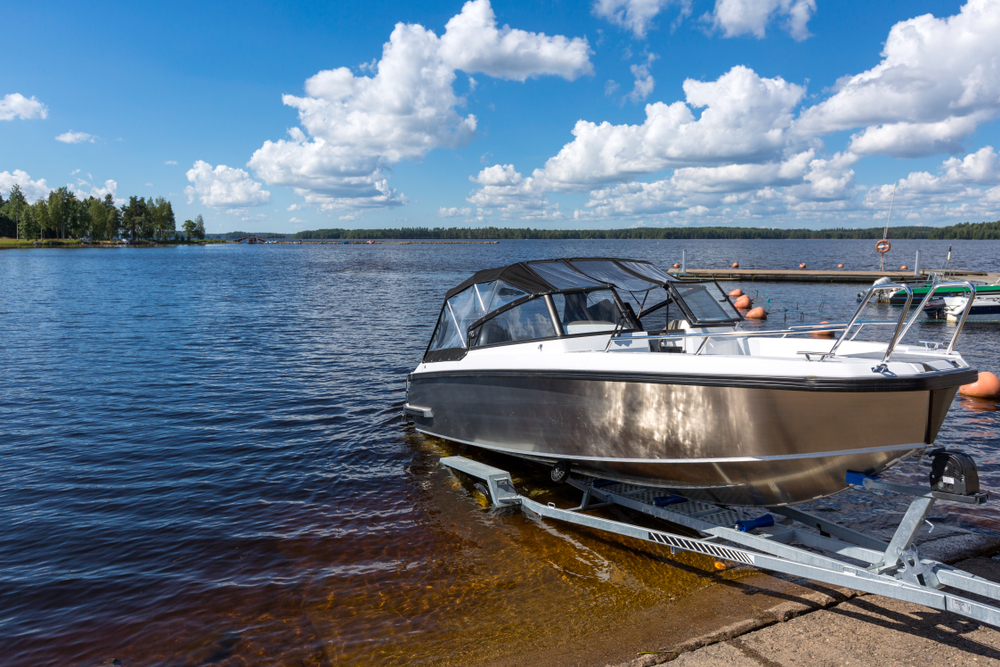
While freshwater may not be as corrosive as saltwater, it can still cause damage to trailers over time. To protect against rust and corrosion in freshwater environments, painted steel and aluminum trailers are commonly used.
These trailers are typically coated with specialized paint or treated with corrosion-resistant materials to provide protection against the effects of freshwater.
- Painted Steel: A cost-effective option that offers good durability. Though effective, it may need more frequent maintenance compared to other materials.
- Aluminum: Lightweight and resistant to corrosion, aluminum trailers are an excellent option for freshwater environments. Their resistance to rust makes them ideal for long-term use without needing excessive maintenance.
Which Trailer Is Right for Your Boat?
Choosing the right trailer material will keep your boat and trailer in the best condition. Galvanized steel trailers are perfect for saltwater conditions. However, painted steel or aluminum trailers work best in freshwater environments. What will be your boat’s primary use? What are the water conditions? Decide and then make an informed decision.
Consider This When Selecting the Best Boat Trailer
Size
The size of the trailer is critical when choosing a boat trailer. The trailer must be long enough to accommodate the full length of your boat. Additionally, it should be wide enough for stability during transportation.
Tip: Measure your boat’s overall length, beam width, and any added accessories or attachments (like antennas or outboard motors) to make sure the trailer fits properly. A misaligned fit can result in instability, potentially causing damage to both the boat and the trailer during transport.
Weight
The weight of the boat plays a major role in selecting the right trailer. A trailer must have the appropriate weight capacity to support the dry weight of the boat, as well as any additional weight from fuel, water, and equipment.
Tip: Don’t just rely on the dry weight. Add the weight of fuel, water, gear, and any additional equipment like electronics or anchors when determining the total weight. Also, check the trailer’s weight rating to ensure it’s sufficient to safely transport your boat.
Shape
Boats come in various shapes and hull designs, and the trailer shape must be selected accordingly.
- For example, boats with deep-V hulls require trailers equipped with keel rollers for better support and stability during transport.
- Flat-bottomed boats or pontoon boats may require bunk trailers for the best support.
Tip: Know the shape of your boat’s hull. Is it a deep-V, catamaran, or pontoon? Choosing the right trailer shape gives better protection during transport, and minimizes the risk of damage.
Frame Material
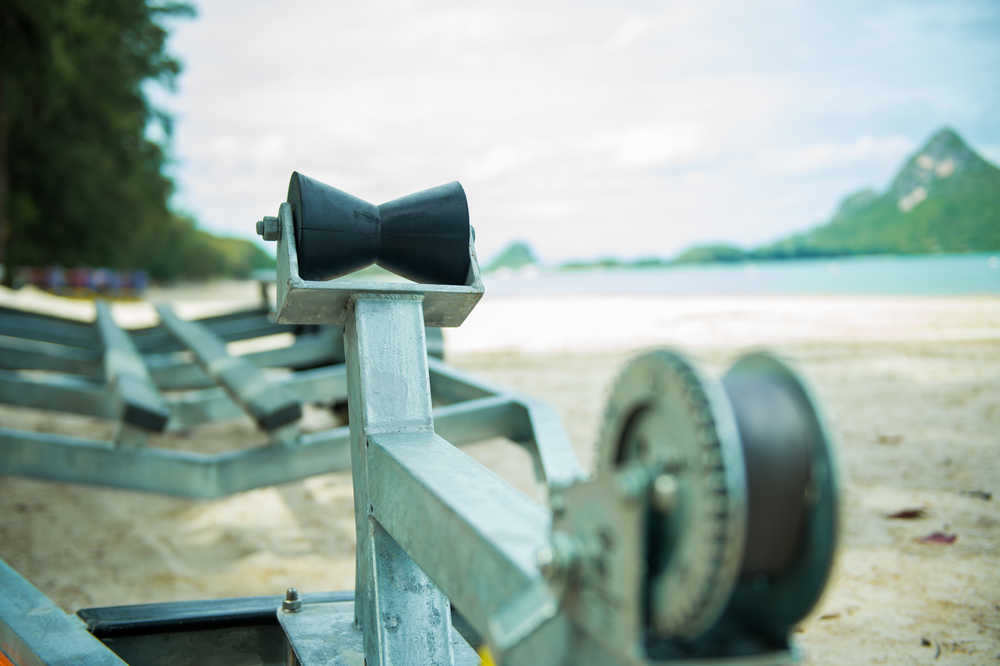
The material used for the trailer’s frame greatly impacts its durability and maintenance needs.
- Galvanized Steel: Ideal for saltwater environments as it resists rust and corrosion. Galvanized steel trailers are perfect for those who transport their boats in coastal areas or plan on using their boat in saltwater regularly.
- Aluminum: Lightweight and corrosion-resistant, making it a great option for both freshwater and saltwater use. Aluminum trailers are easier to handle and maintain but tend to be more expensive.
- Painted Steel: A cost-effective option that still offers good durability, but it is more susceptible to rust over time, especially when exposed to saltwater.
Tip: Consider where you will be using your boat most. If it’s frequently in saltwater, opt for galvanized steel or aluminum for better corrosion resistance.
Braking System
Depending on the weight of your boat and the towing regulations in your area, you might need a hydraulic or electric braking system.
Tip: For boats over a certain weight (typically 3,000 lbs or more), trailers with brakes are required by law in many areas. If you’re unsure, consult local regulations or talk to the trailer manufacturer about the braking system requirements.
Suspension
The suspension type affects the trailer’s stability and how well it absorbs shock during transport. The two most common types are torsion and leaf spring suspensions.
- Torsion Suspension: Offers a smoother ride and is ideal for larger boats and longer trips.
- Leaf Spring Suspension: More affordable and easier to maintain but may provide a bouncier ride, which can cause damage to the boat over long distances.
Tip: Choose torsion suspension if you’re transporting heavier boats or going on longer trips, as it provides more stability and absorbs shocks better. Leaf spring suspension is good for shorter distances with lighter boats.
Accessories
When selecting a boat trailer, don’t forget to consider additional accessories or features that can enhance convenience and safety:
- Adjustable bunks or rollers for ease of loading and unloading.
- Winches for secure boat handling.
- Tie-down straps to prevent movement during transit.
- Spare tire mounts for peace of mind during long-distance trips.
Tip: Think about your specific loading and unloading needs. If you’re often launching in areas with low water, adjustable bunks or rollers will make the process much easier.
Take the time to evaluate your specific needs for a trailer. Consult with professionals if you think it’s necessary. Consider factors like size, weight, shape, frame material, braking system, suspension, and accessories. Following this guidance will help you find a trailer that meets your requirements and provides a secure transport experience.
Nationwide Auto Transport
Bonus Tip
Did you know you can avoid any anxiety associated with shipping your boat? Contact a Nationwide Auto Transportation consultant to discuss your boat shipping needs!
Planning your next maritime adventure but worried about the logistics of shipping your boat? Fear not! At Nationwide Auto Transportation, we’ve compiled an all-inclusive guide to help you navigate the complexities of boat shipping. Whether it’s understanding pricing, safety measures, or choosing the right company, our guide “Reliable Boat Shipping: Your Ultimate Guide to Success“ has got all the answers.
Skills Required for Properly Loading Boats
Loading a boat onto a trailer may seem straightforward, but it requires specific skills to ensure safety and prevent damage. Improper loading can lead to accidents and harm to your vessel. Here are the essential skills needed for properly loading boats onto trailers:
- Alignment
- Proper alignment is crucial. Check that the boat is centered and straight on the trailer. Use guideposts or trailer markings to assist in positioning the boat correctly. Avoid submerging the trailer too deeply, as this can hinder proper alignment.
- Balance
- Maintaining even weight distribution prevents the trailer from tilting or becoming unstable. Make sure that your boat’s weight is evenly spread across the trailer to facilitate smooth and stable transportation.
- Handling
- Careful handling is key to prevent damage. Maneuver the boat onto the trailer with precision, considering any obstacles or tight spaces. Practice and patience are key to mastering this skill.
- Tie-Down Techniques
- Securing the boat is a must for safe transit. Use strong, reliable straps or chains to secure the boat at the bow, stern, and sides. Regularly inspect these tie-downs for wear and replace them as needed.
Knowledge of Boat Anatomy and Why It Matters for Trailering
Understanding your boat’s structure is key to safe and successful trailering. It’s not just about knowing where to attach straps or chains; it’s about understanding how the boat’s weight is distributed and how it interacts with the trailer. Let’s break down some basic boat anatomy:
- Hull: This is the main body of the boat, the part that displaces water and provides buoyancy. Different hull shapes (flat, V-shaped, etc.) affect how the boat sits on the trailer and how it handles on the road. Knowing your hull type helps determine the best bunking configuration.
- Bow: The front part of the boat. It’s important to secure the bow properly to prevent movement during transport.
- Stern: The rear part of the boat. Like the bow, proper stern support is vital for trailering safety.
- Keel: A structural element running along the bottom of the hull, often providing stability. Some boats have a prominent keel (like sailboats), which requires special consideration when choosing a trailer and bunking system. The keel’s shape and depth will dictate how it rests on the trailer bunks.
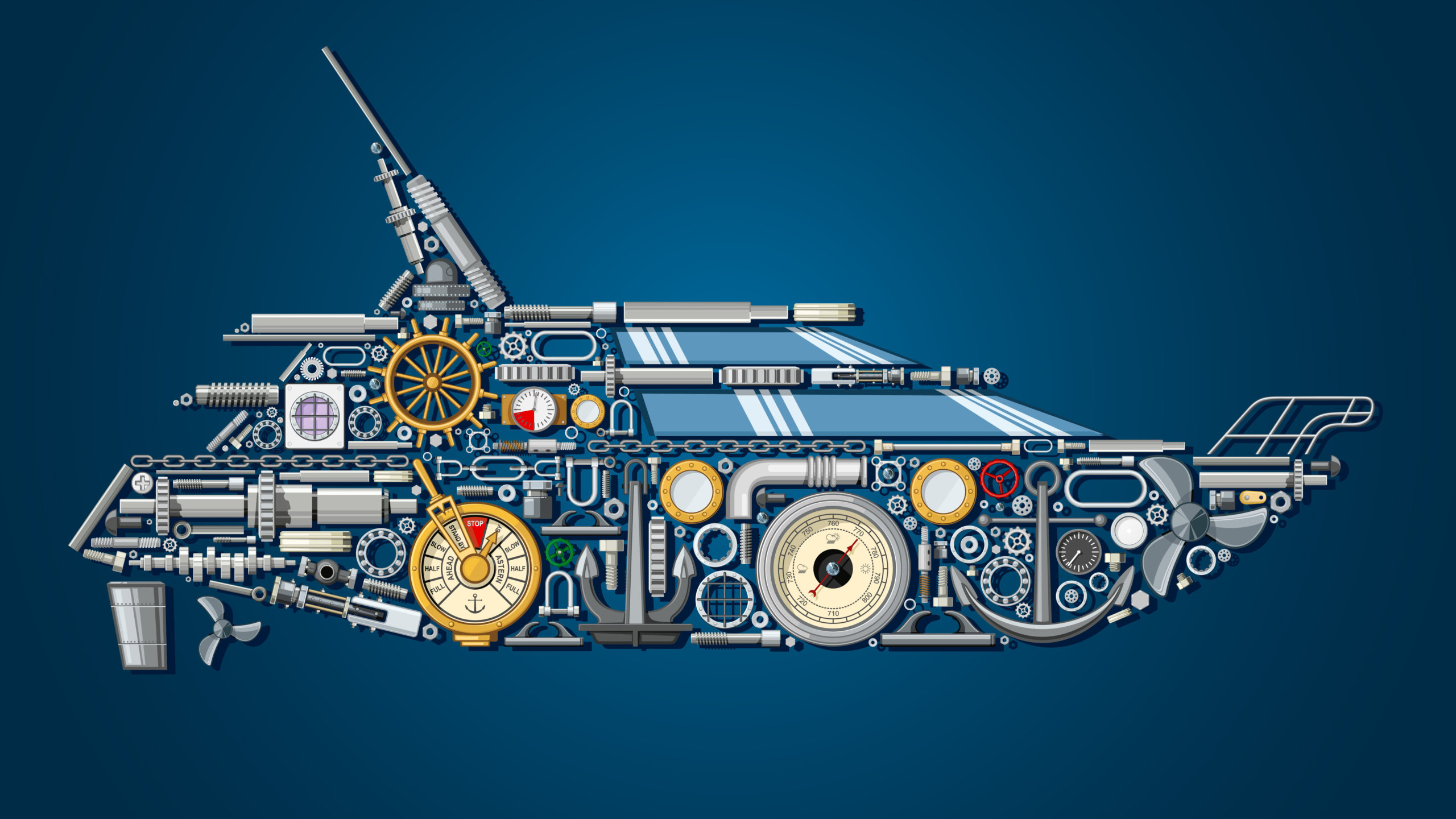
Transom to Deck
- Transom: The flat, vertical surface at the stern where the outboard motor is often attached. The transom’s strength is important, especially for larger motors, and it needs to be properly supported during trailering.
- Gunwale: The upper edge of the boat’s sides. While sometimes used as tie-down points, it’s essential to check your boat’s manual to confirm these points are strong enough. Often, dedicated tie-down points are recommended.
- Deck: The top surface of the boat. Understanding where the deck is reinforced is helpful if you need to use it for securing the boat to the trailer (though again, dedicated tie-down points are usually preferred).
- Weight Distribution: How the weight is distributed within the boat impacts how it sits on the trailer. A boat that’s heavier in the bow or stern will require different trailer adjustments than one with evenly distributed weight.
Knowing these basic terms and understanding how they relate to your boat will make you a more informed and safer boater, especially when it comes to trailering. It allows you to communicate more effectively with trailer professionals for the best possible setup for your boat.

“I’ve hauled everything from dinghies to deep-V fishing boats, and the biggest mistake I see boat owners make is not taking the time to properly center their boat on the trailer. A few inches off might not seem like much, but it can cause serious handling problems on the road. Take your time, double-check your measurements, and always use a spotter if you can. A well-loaded boat is a safe boat.”
Nationwide Auto Transportation Driver, John Mattingly
Need to ship your boat urgently? Here’s some help: Expedited Car Shipping Companies Near Me | Find a Local Provider
More Boat Loading Skills That Will Help You
- Trailer Maintenance
- Regular trailer maintenance is essential. Check tire pressure, inspect the hitch and coupler for damage, and ensure lights and brakes function properly. Regular upkeep prevents issues during loading and transit.
- Patience and Attention to Detail
- Take the time to position the boat carefully on the trailer. Ensure it is centered, balanced, and securely fastened. Rushing can lead to mistakes and potential accidents.
- Practice and Experience
- Regular practice enhances your skills and confidence. Seek guidance from experienced boaters or professionals who can provide valuable tips and advice.
By developing these skills for a safe and successful boat loading experience. Always prioritize safety and take necessary precautions to protect both your boat and yourself during the loading process.
For more detailed guidance, consider visiting the BoatUS Trailering Guide, which offers comprehensive information on boat trailering and safety.
For a visual demonstration, you might find this video helpful:
Selecting the Best Boat Trailer | Safe Width for Boat Transport
Transporting your boat safely requires careful consideration of trailer selection, especially regarding width. Make sure that your boat fits within legal width limits for compliance and safety.
Legal Width Limits
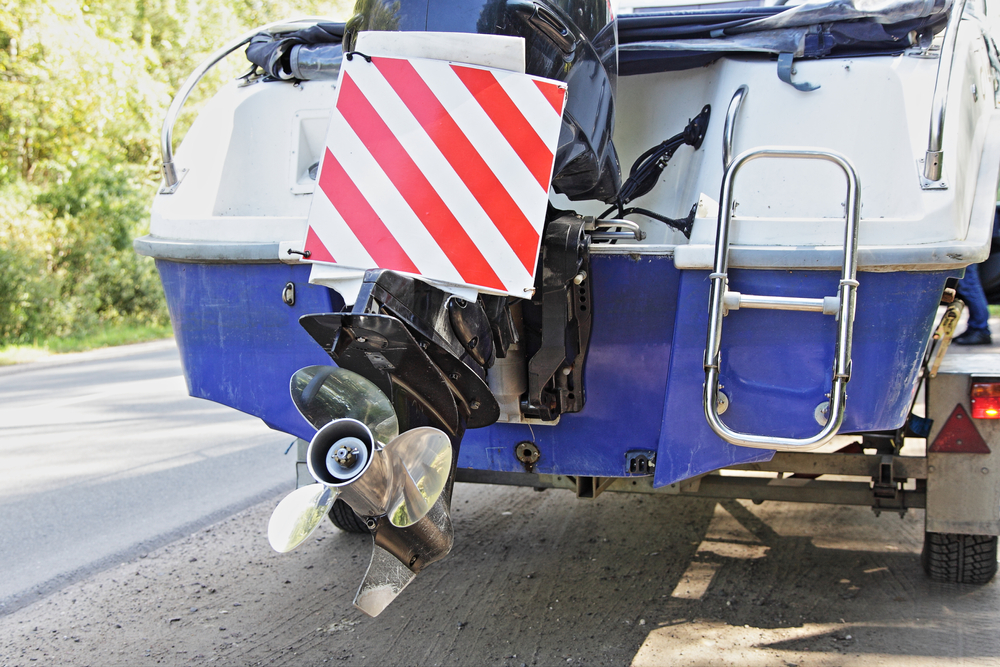
In the United States, the standard maximum legal trailer width is 102 inches (8.5 feet) for non-commercial vehicles. However, regulations can vary by state.
For instance, New York, New Jersey, and Hawaii have a maximum width limit of 96 inches (8 feet), while North Carolina allows trailers up to 120 inches (10 feet) wide.
Exceeding these limits typically requires special permits and may impose restrictions on travel times and routes.
Consider the Boat’s Dimensions
Accurately measuring your boat’s width at its widest point, usually the beam, is essential. Be mindful of additional features like rails or platforms that may extend beyond the hull, as these contribute to the overall width and must be accounted for to ensure legal compliance during transport.
Allow for Clearance
When selecting a trailer, it’s advisable to choose one that provides a few inches of clearance on each side of the boat. This extra space facilitates easier loading and unloading and helps prevent damage during transit. For example, if your boat’s beam is 96 inches, a trailer width of at least 102 inches would be appropriate.
Use Wide Load Indicators
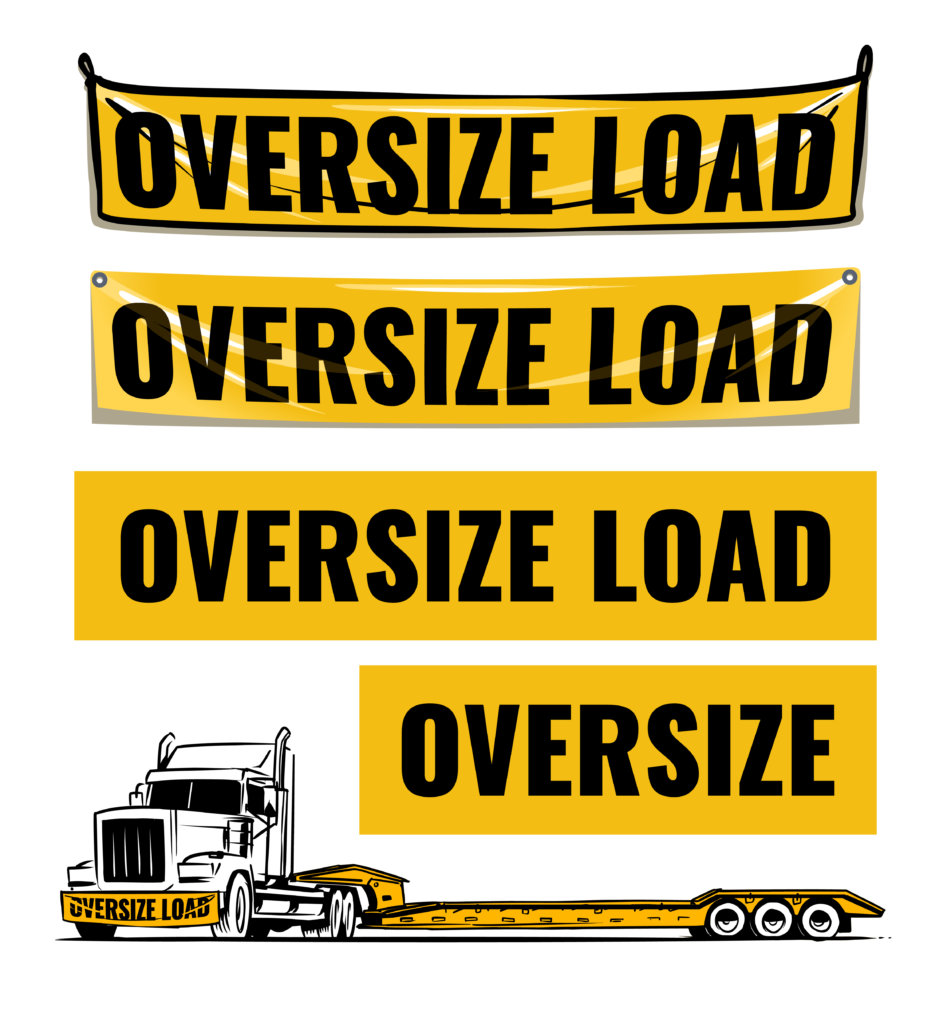
If your boat exceeds standard width limits and requires a special permit, it’s important to use wide load indicators such as flags, banners, or lights to alert other motorists. Compliance with state regulations regarding these indicators is essential for safety and legality.
For a comprehensive overview of state-specific towing laws, the American Boating Association provides a valuable resource.
By carefully considering your boat’s dimensions and adhering to legal requirements, you can select a trailer that’s best for safe and compliant transportation.
Consider Professional Transport
Transporting a boat—especially an oversized one—can be complex. If you’re unsure about the safe width for transporting your boat or your vessel exceeds legal limits, hiring a professional boat transport service is often the best decision.
When Should You Hire a Professional Boat Transport Service?
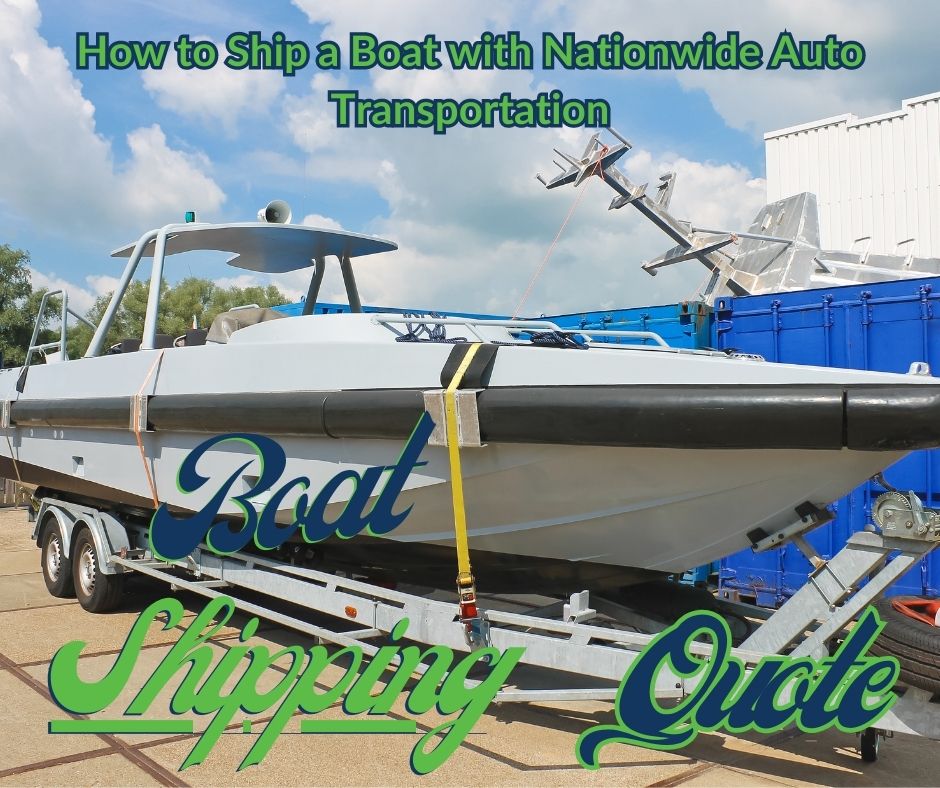
✅ Uncertain About Legal Width Limits
If you’re unfamiliar with state-specific boat trailer regulations, professional transport companies are well-versed in the rules and can ensure compliance.
✅ Choosing the right boat trailer |Your Boat Exceeds Legal Width
When a boat is wider than 102 inches (8.5 feet)—the standard legal width in most U.S. states—permits and escort vehicles may be required. Professional transport services handle these logistics for you, ensuring safe and legal delivery.
✅ Avoiding Risks and Hassles
Towing a boat on your own comes with challenges, such as navigating traffic, securing permits, handling toll roads, and ensuring proper weight distribution. Professionals have the necessary specialized trailers, wide-load indicators, and expertise to handle oversized boat shipping efficiently.
“Shipping a boat isn’t like shipping a package. It’s a complex process that requires specialized equipment, knowledge of permits and regulations, and careful handling. While some DIYers might try to tackle it themselves, the risk of damage, delays, and unexpected costs is significantly higher.
A professional boat shipping company like Nationwide Auto Transportation brings expertise, insurance, and a network of resources to ensure your boat arrives safely and on schedule. Think of it this way: you wouldn’t perform your own open-heart surgery, would you? The same logic applies to boat shipping. When you’re entrusting your valuable asset to someone, professional expertise is worth the investment.”
— Jahun Brawny (Shipping Guru)
Get Expert Help Today When Choosing the Right Boat Trailer
Instead of stressing over width limits, permits, and transport logistics, let Nationwide Auto Transportation handle your boat shipping. Get a free boat shipping quote now!
Calculating Boat Trailer Capacity
When it comes to choosing the right boat trailer, finding one with the appropriate capacity is the holy grail. The boat trailer capacity refers to its ability to safely carry and support the weight of the boat. Calculate the boat trailer capacity accurately for a safe and successful transport.
Key Factors in Calculating Boat Trailer Capacity
- Dry Weight of the Boat: This is the weight of the boat without any fluids, gear, or engines.
- Weight of the Engine(s): Include the weight of outboard or inboard engines.
- Fuel Weight: Calculate based on the fuel tank capacity, using approximately 6.1 pounds per gallon.
- Water Weight: If your boat has water tanks, add this weight using 8.3 pounds per gallon.
- Additional Gear: Account for batteries, personal items, and any installed equipment.
- Safety Margin: It’s advisable to add a 10% allowance for unforeseen gear or weight discrepancies.
Comprehensive Weight Calculation Table
| Component | Calculation Method | Example Calculation (in pounds) |
|---|---|---|
| Dry Weight | Manufacturer’s specification | 3,000 |
| Engine Weight | Manufacturer’s specification | 400 |
| Fuel Weight | Fuel capacity (gallons) × 6.1 | 50 gallons × 6.1 = 305 |
| Water Weight | Water capacity (gallons) × 8.3 | 20 gallons × 8.3 = 166 |
| Additional Gear | Estimated or actual weight of gear and equipment | 500 |
| Subtotal | Sum of above weights | 4,371 |
| Safety Margin (10%) | Subtotal × 0.10 | 437 |
| Total Weight | Subtotal + Safety Margin | 4,808 |
In this example, the total calculated weight is 4,808 pounds. Therefore, you should select a trailer with a capacity exceeding this weight to ensure safe transportation. Always refer to the trailer’s capacity plate for maximum load information and ensure your total weight does not exceed this limit.
For a more precise assessment tailored to your specific boat, consider using online tools like the Venture Trailers Weight Calculator. This resource allows you to input detailed information about your boat to determine the appropriate trailer capacity.
By meticulously calculating these factors, you can select a boat trailer that ensures safe and efficient transportation of your vessel.
Boat Trailer Buying Guide | Boat Trailer Capacity Focus
Gross Trailer Weight (GTW)
GTW is the total weight of the boat and trailer when fully loaded. To ensure the trailer can handle the load, add the boat’s weight to the trailer’s weight, including fuel, gear, and other equipment.
Tongue Weight
This is the downward force exerted on the hitch. For safe towing, tongue weight should be 10-15% of the GTW, ensuring balance and stability.
Load Distribution
Weight must be evenly distributed front to back and side to side to prevent instability. An unbalanced load can lead to swaying and unsafe towing conditions.
Axle and Tire Capacity
- Axle Capacity: The axles must support the full weight of the boat. Check specifications on the axle rating plate.
- Tire Capacity: Tires must handle the load—refer to sidewall markings for max capacity. Overloaded tires can lead to blowouts.
Brakes & Suspension
A reliable braking system and suspension improve control and handling. Larger boats may require hydraulic or electric brakes for safe stopping power.
Capacity Plate
Most trailers have a capacity plate listing axle ratings, tire size, and GVWR (Gross Vehicle Weight Rating). Always ensure your boat, fuel, and gear do not exceed the trailer’s maximum load.
👉 Tip: Choose a trailer with a higher capacity than your boat’s weight to accommodate extra equipment and unexpected weight fluctuations.
Matching Weight with Boat Trailer Capacity | Boat Trailer Buying Guide
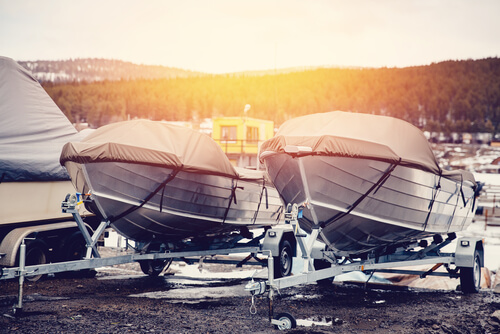
Consider the weight of your boat and find a trailer with a capacity that exceeds this weight. Remember to factor in additional weight from fuel, gear, and equipment. Follow these general guidelines.
- Light Boats: Boats weighing less than 2,000 pounds typically require a single-axle trailer with a capacity of at least 3,000 pounds.
- Mid-Size Boats: Boats weighing between 2,000 and 5,000 pounds usually require a tandem-axle trailer with a capacity of at least 6,000 to 7,000 pounds.
- Large Boats: Boats weighing over 5,000 pounds may require a tandem-axle or tri-axle trailer with a capacity of 8,000 pounds or more, depending on the weight of the boat and additional equipment.
Importance of Choosing the Right Capacity | Choosing the Right Boat Trailer
Select a boat trailer with the correct capacity for safe and secure transportation. Here’s why:
1️⃣ Safety: Overloading a trailer makes it unstable, increasing the risk of accidents. It also puts excessive strain on the vehicle’s brakes and suspension.
2️⃣ Durability: An overloaded trailer can suffer structural damage, such as bent frames or broken axles, leading to expensive repairs or complete failure.
3️⃣ Legal Compliance: Many states have weight limits for trailers, and exceeding them can result in fines, license suspensions, or other penalties.
👉 Tip: When in doubt, choose a trailer with a higher capacity to avoid overloading risks.
Safe Boat Shipping
The right boat trailer ensures safe and efficient boat shipping. Always match the trailer’s capacity to your boat’s weight, follow manufacturer guidelines, and prioritize safety. Protect your investment and the well-being of others by making the right trailer choice. 🚤
Happy and Safe Boat Transport with Nationwide | Boat Trailer Selection Tips
Choosing the right boat trailer doesn’t have to be overwhelming. By accurately calculating boat trailer capacity and considering key factors like weight distribution, axle strength, and legal requirements, you can enjoy a smooth and secure boat transport experience.
🚤 Key Tips for Safe Boat Transport:
✔️ Know Your Trailer’s Capacity: Always match the trailer to your boat’s weight, including fuel and gear.
Follow Manufacturer Guidelines: Refer to official recommendations for weight limits, braking systems, and suspension types.
Plan for Protection: Consider additional safeguards like weather covers, tie-downs, and secure load distribution.
If you need expert advice on boat shipping, the professional team at Nationwide Auto Transportation is here to help. With our years of experience, you get a stress-free and efficient transport experience.
📞 Contact Nationwide today for expert assistance and a seamless boat transport journey! 🚛
Lastly, keep in mind that Nationwide Auto Transportation offers reliable door-to-door service for all your vehicle shipping needs, including boats. With their seamless US vehicle shipping services, you can trust Nationwide Auto Transportation to safely and securely transport your boat to its destination.
For more information on Nationwide Auto Transportation and their services, visit their website.
Choosing the Right Boat Trailer | Frequently Asked Questions
What factors should I consider when choosing the right boat trailer?
Selecting the best boat trailer involves several key considerations. First, accurately determine your boat’s weight and dimensions. This information is crucial for calculating the necessary boat trailer capacity. Also, consider the type of boat you have (e.g., sailboat, powerboat, pontoon) as this influences the best boat trailer type. Think about where you’ll be using the trailer (saltwater vs. freshwater) as this impacts material choices like aluminum vs galvanized boat trailer. Finally, factor in your towing vehicle’s capabilities and local towing regulations, including trailer GVWR for boats and any braking requirements.
Should I buy or rent a trailer for boat shipping? | Choosing the right boat trailer
The buy vs. rent decision depends on how often you’ll be trailering your boat. If you’re a frequent boater, buying a trailer often makes more sense financially in the long run. However, for occasional use, renting a trailer can be a cost-effective option. Consider factors like storage space, maintenance costs, and the availability of rental options in your area.
What type of trailer is suitable for boat shipping?
Several boat trailer types exist, each designed for specific boats and purposes. Bunk trailers use padded supports (bunks) to cradle the hull, making them suitable for various boat shapes. Roller trailers use rollers to support the boat, simplifying launching and retrieving. Float-on trailers, also known as drive-on trailers, allow you to drive the boat directly onto the trailer. Choosing the right boat trailer capacity depends on your boat, your launching/retrieving habits, and your budget.
Choosing the right boat trailer | Do I need a trailer with brakes for boat shipping?
Trailer brakes are often required for heavier boat and trailer combinations. Local regulations dictate the specific weight threshold that triggers this requirement. Even if not legally mandated, consider trailer brakes for added safety, especially when towing larger boats. They provide better control and shorter stopping distances.
What are the legal requirements for towing a boat with a trailer?
Towing regulations vary by location. Generally, you’ll need a valid driver’s license, proper registration for both your tow vehicle and the trailer, and adherence to weight limits and speed restrictions. You may also need specific safety equipment, like mirrors and lighting. Consult your local Department of Motor Vehicles or equivalent for precise regulations in your area. Understanding these boat trailer capacity, and other regulations, is critical for safe and legal boat towing.
